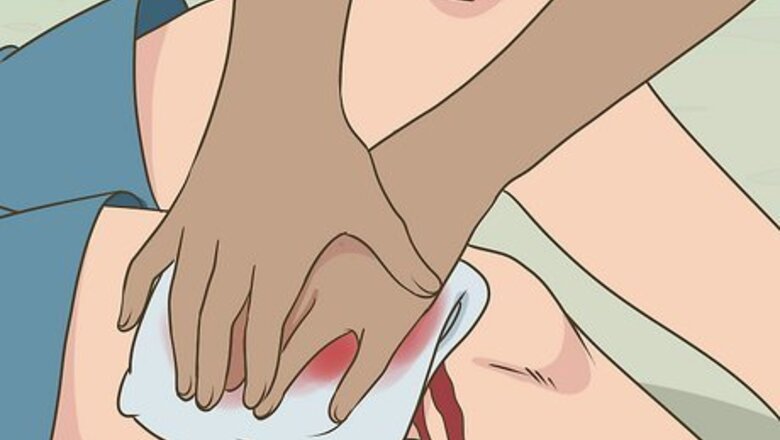
views
Preparing Wounds
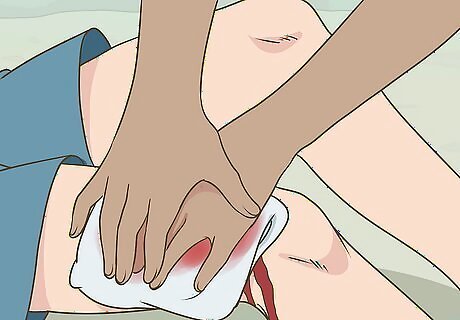
Apply pressure to stop the bleeding. Before you can apply a bandage, you'll need to stop the bleeding. Bleeding is the body's way of flushing dirt and bacteria out of a wound, but it can make it difficult to keep any bandages or dressings in place if the wound is still actively bleeding. Use a clean piece of gauze or cloth to apply pressure. Place the gauze/cloth directly on the wound and apply gentle pressure. Don't push too hard, or you could cause further injury to the site of the wound. If the gauze gets soaked with blood, apply additional gauze over the existing piece to absorb the blood. Do not remove the gauze that you've started with, and keep applying pressure. A deep wound may take a while to stop bleeding. Serious injuries can bleed for 30 minutes or longer. If the injury is on an arm or leg, keep it raised above heart level. This will help slow the flow of blood to the wound, which can allow the injury to start healing.
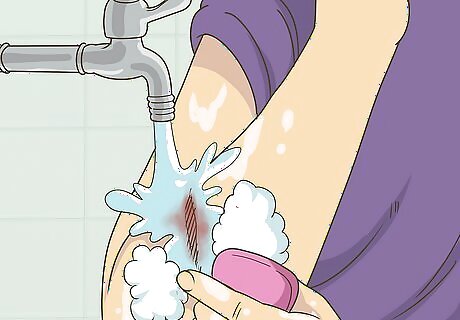
Clean the wound. Once the bleeding has slowed or stopped altogether, you'll want to clean the wound. This will help remove any debris that may be lodged inside the wound, and it will also help reduce the chances of an infection. Use clean, cool water to rinse off a wound. Soap, rubbing alcohol, hydrogen peroxide, and iodine will all disinfect the wound, but they will cause a lot of pain and irritation. Hold the wound under a faucet of clean, running water, or pour clean, cool water directly over the wound to rinse it out. If there is any dirt or grit in the wound, sanitize a pair of tweezers by dipping them in rubbing alcohol. You may then use them to gently pick out the debris from the cut, but be careful and remember that an errant tweezer could cause a great deal of pain to an open wound.
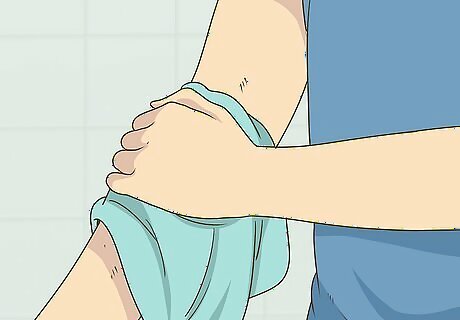
Dab the wound dry with a clean, disposable towel. Before applying any antibiotic or bandages, you'll want to dry the skin around the wound. Use a clean, dry, disposable towel to gently dab the wound dry and wipe away any excess water, blood, or dirt on the skin around the injury.
Dressing Wounds
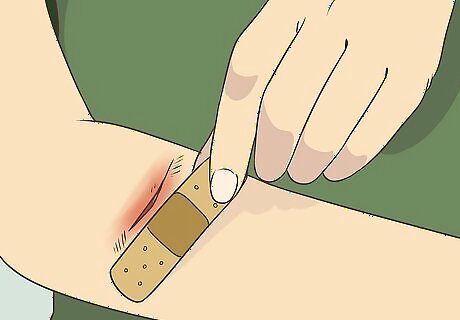
Assess whether a bandage is necessary. Though you may think every wound needs a bandage, a bandage may actually be unhelpful or even harmful to certain types of wounds. In general, a cut or gash that is not very deep will benefit from a bandage, while other types of wounds will require different treatment approaches. Keeping minor scratches, scrapes, and cuts clean might be sufficient, and you may be able to leave them uncovered. This will allow the wound to remain dry and begin to heal. Deep or wide wounds may need to be sealed by a medical professional. These injuries may require stitches, staples, or other special medical dressings. Some injuries may heal best with hospital glue, like Dermabond, which seals the wound shut. You should never use household glue, though, as this is unsafe and may further injure the wound.
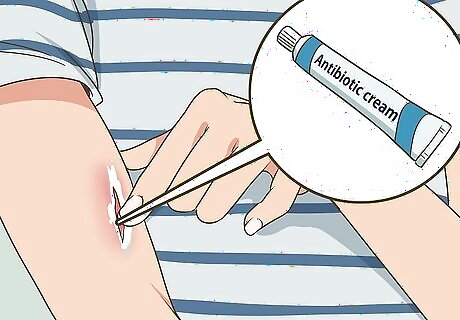
Apply an antibiotic. After cleaning your wound with soap and water, use a small dab of antibiotic cream or ointment to help disinfect the wound and keep the wound from drying out. You won't need much antibiotic. Spread the small dab evenly across the wound until a thin layer covers the entire site of the injury. Apply the antibiotic to the wound itself, not the cotton center.

Decide on a type of dressing for the wound. There are many different types of dressings and bandages that can be used for a wound. Some factors to consider when choosing a bandage include the size/shape of the wound, the nature of the wound, and any allergies the injured person might have. Standard adhesive bandages are best for small or superficial cuts, and they come in a number of shapes and sizes. They may not be helpful for deep cuts, long cuts, or jagged wounds with uneven edges. You can also buy adhesive bandages that are water-resistant, latex-free, and in special shapes to cover oddly-formed wounds. Cloth bandages and dressings like gauze can also be used for wounds that are bleeding excessively. Steri-strips can be left on an injury for up to 10 days or until they fall off on their own. Hospital glue is quick and painless. It remains on the wound for one to two weeks, and by the time it peels off the wound will have healed.
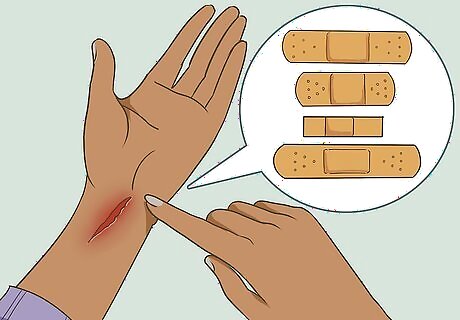
Choose the right size bandage. Bandages come in many shapes and sizes. Before you dress a wound, it's important to size up the injury and look through the bandages on hand to find one that will adequately cover the injury. If the bandage is too small it won't effectively protect the wound. If it's too big, it might hinder movement or end up soaking up water or dirt as the injured person moves and goes about their day. Pick a bandaid that is slightly bigger than your wound, if possible.
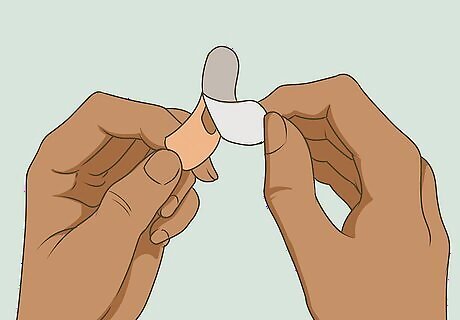
Unwrap and apply the bandage. Be very careful as you unwrap the bandage. Pre-packaged bandages are sterile, and it's important that they remain sterile when you apply them to a wound. Be very careful as you peel off the backing on the adhesive strips, and only touch the sticky parts. Do not touch the sterile cloth center with your hands. Pull back the paper guarding and apply the cloth center flat to your skin. Try to center the sterile cloth in the middle of the bandage directly over the deepest part of the wound. If the wound is long, you can use multiple bandages to keep it covered. If the wound is a minor scrape or scratch, it's actually best to avoid bandages and simply leave it uncovered.
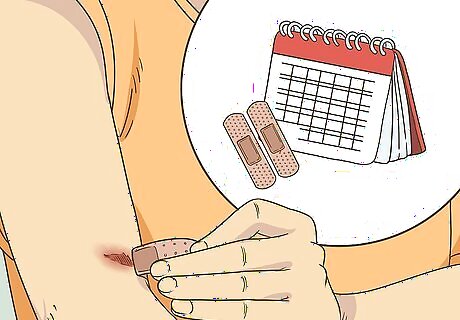
Change the bandages every day and as needed intermittently. A bandage keeps dirt and bacteria out of your wound, which means the bandage will inevitably get soiled throughout the day. It may also soak up some blood if your wound starts to bleed again. Generally speaking, you should take the bandages off and leave the wound uncovered at night so it can breathe (each would is different, however, and it might need coverage at night as well). Then cover the wound with clean bandages every morning, and keep some extras with you in case the bandages you're wearing get wet or dirty.
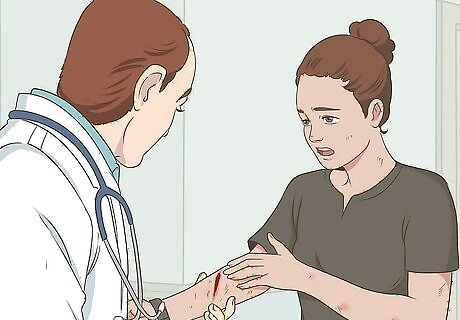
Recognize when you'll need medical attention. It's easy to bandage a simple wound at home, but some injuries require further medical attention. Any wound that is gaping, jagged, or shows exposed fat/muscle under the skin will need stitches as soon as possible. You should also have a medical professional assess the wound to evaluate your risk of infection. Only a doctor or nurse can stitch a wound. If you get a wound stitched up within a few hours of the injury, it will reduce the risk of infection and make the scars (if any) very minimal. If you (or the injured individual) have not had a tetanus shot within the last five years and the injury was caused by a dirty or rusty piece of metal or it was particularly deep, a doctor will probably recommend a tetanus booster shot. The shot should be administered as soon as possible, so don't delay seeking medical attention.
Taking Safety Precautions
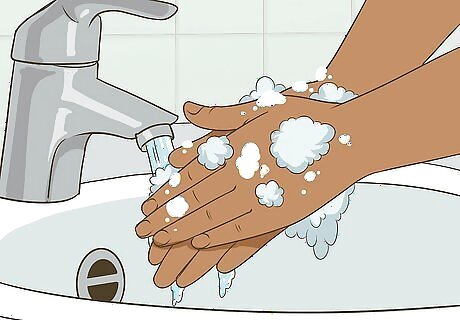
Wash your hands. Before you do anything to treat a wound, whether it's on your own body or on someone else's, you should first wash your hands. Properly washing your hands will help reduce the risk of infection and promote faster healing at the site of the injury. Use clean, running water from a faucet. It doesn't matter whether you use warm or cold water, so choose what you're most comfortable with. Wet your hands under the faucet, apply soap, and lather the soap until you've covered the entire surface of both hands. Make sure you lather the soap between your fingers and under your nails as well. Spend at least 20 seconds scrubbing your hands and moving the lather around. Rinse away all the soap and any physical dirt/debris from your hands under the faucet. Dry your hands with a clean, disposable towel, or let them air dry. In the absence of clean, running water, you can disinfect your hands with an alcohol-based hand sanitizer. However, hand sanitizer will only kill germs and will not remove dirt or any physical debris from your hands.
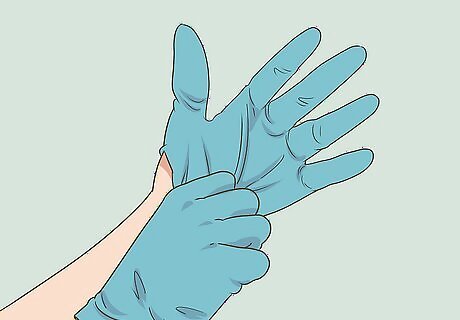
Put on disposable gloves if you're treating another person. Because blood-borne pathogens are highly infectious, it's best to wear disposable gloves any time you might come in contact with someone else's blood or bodily fluids. Always use a clean pair of disposable nitrile, neoprene, vinyl, or latex gloves before touching the injured person, and wash/disinfect your hands as soon as you remove the gloves.
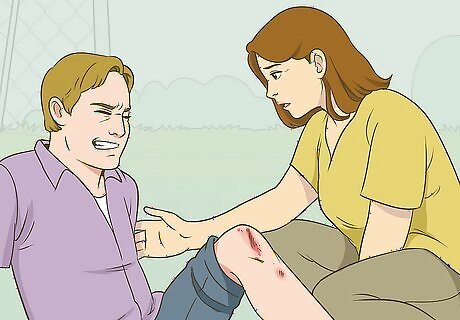
Have the injured person get comfortable. If you're dressing a wound for someone else, have that individual get comfortable before you begin. You can have the individual sit or lie down (if feasible). You should also explain everything you're going to do before you begin to actually treat the wound. Work on the side of the injury if you're treating someone else's wound. That way you won't have to lean across the individual's body to dress the wound, which may make the individual feel stressed or uncomfortable.




















Comments
0 comment